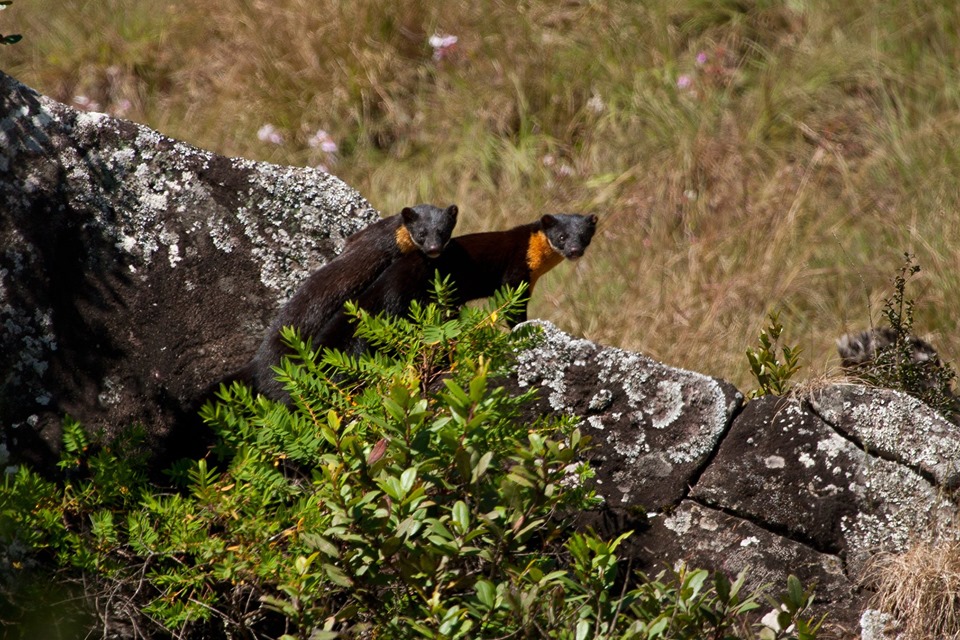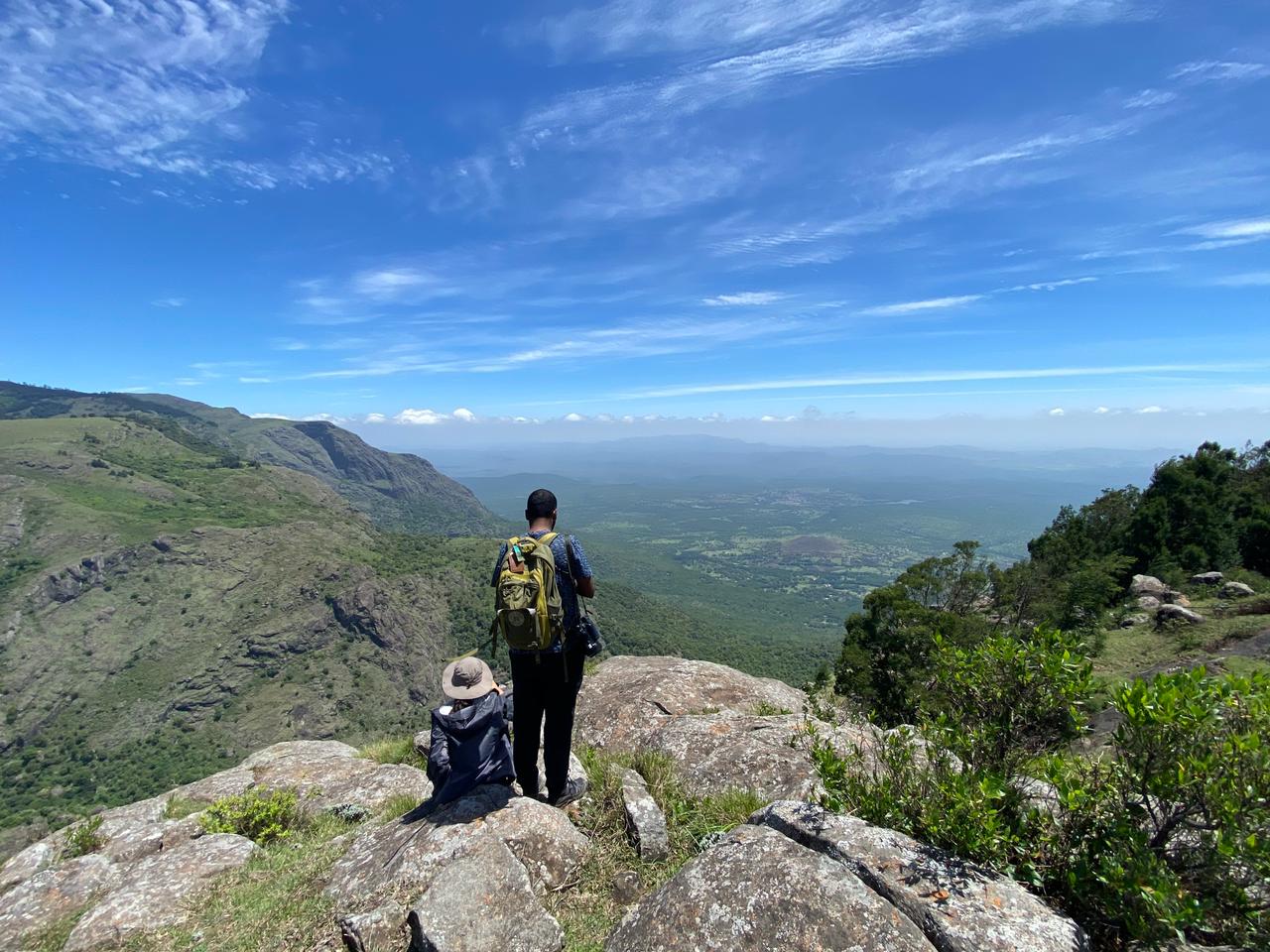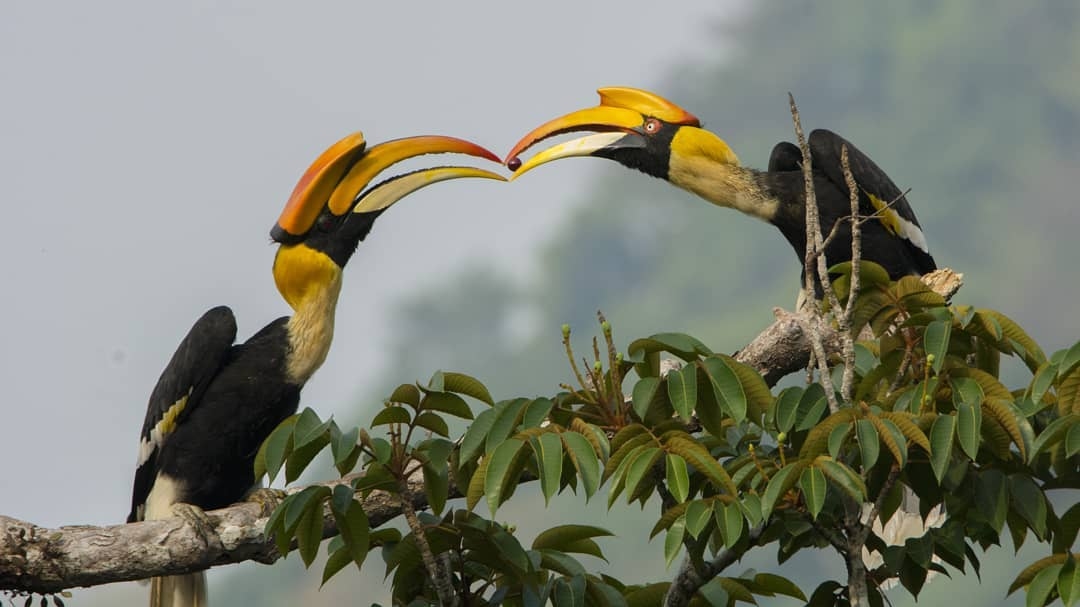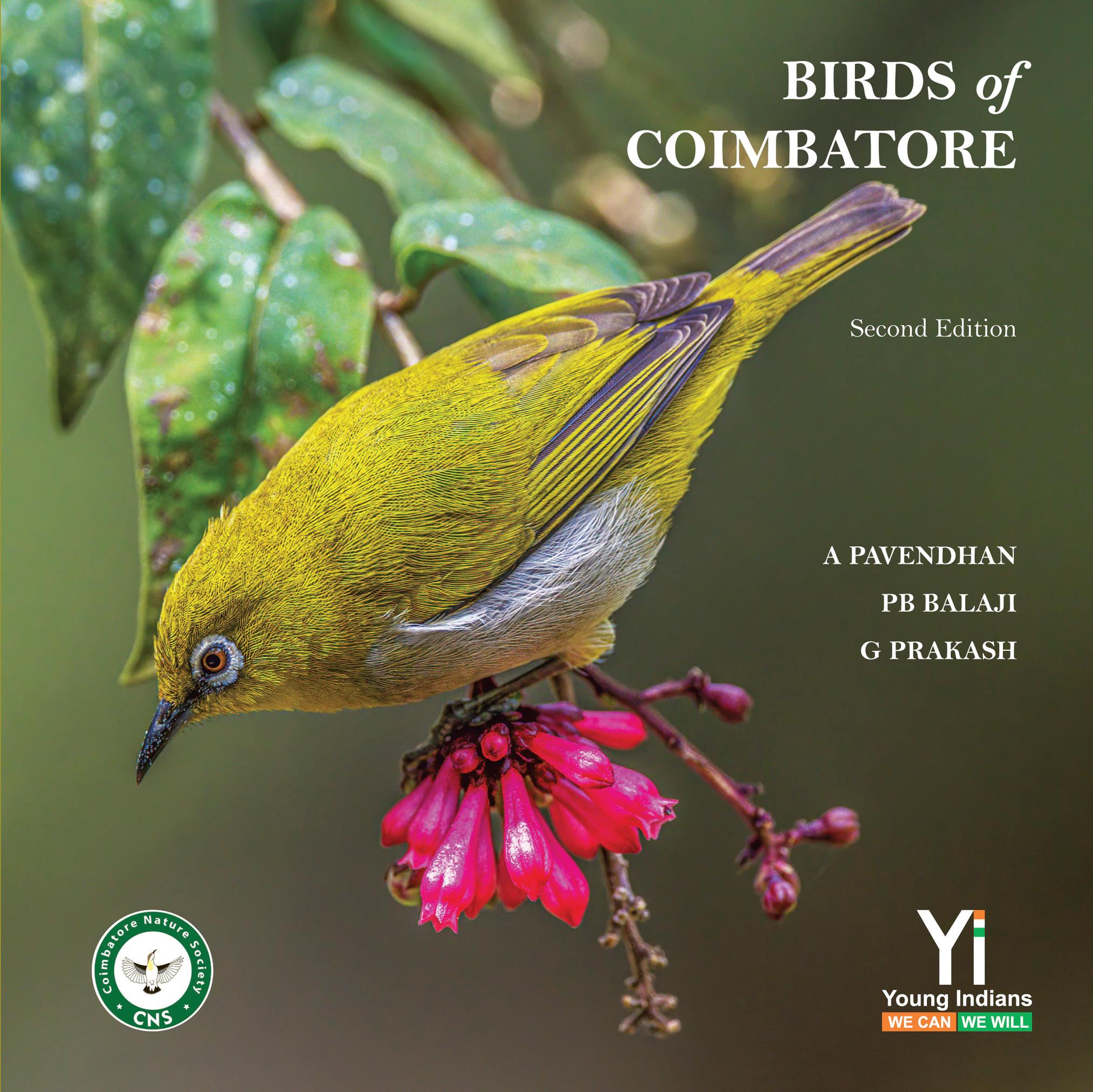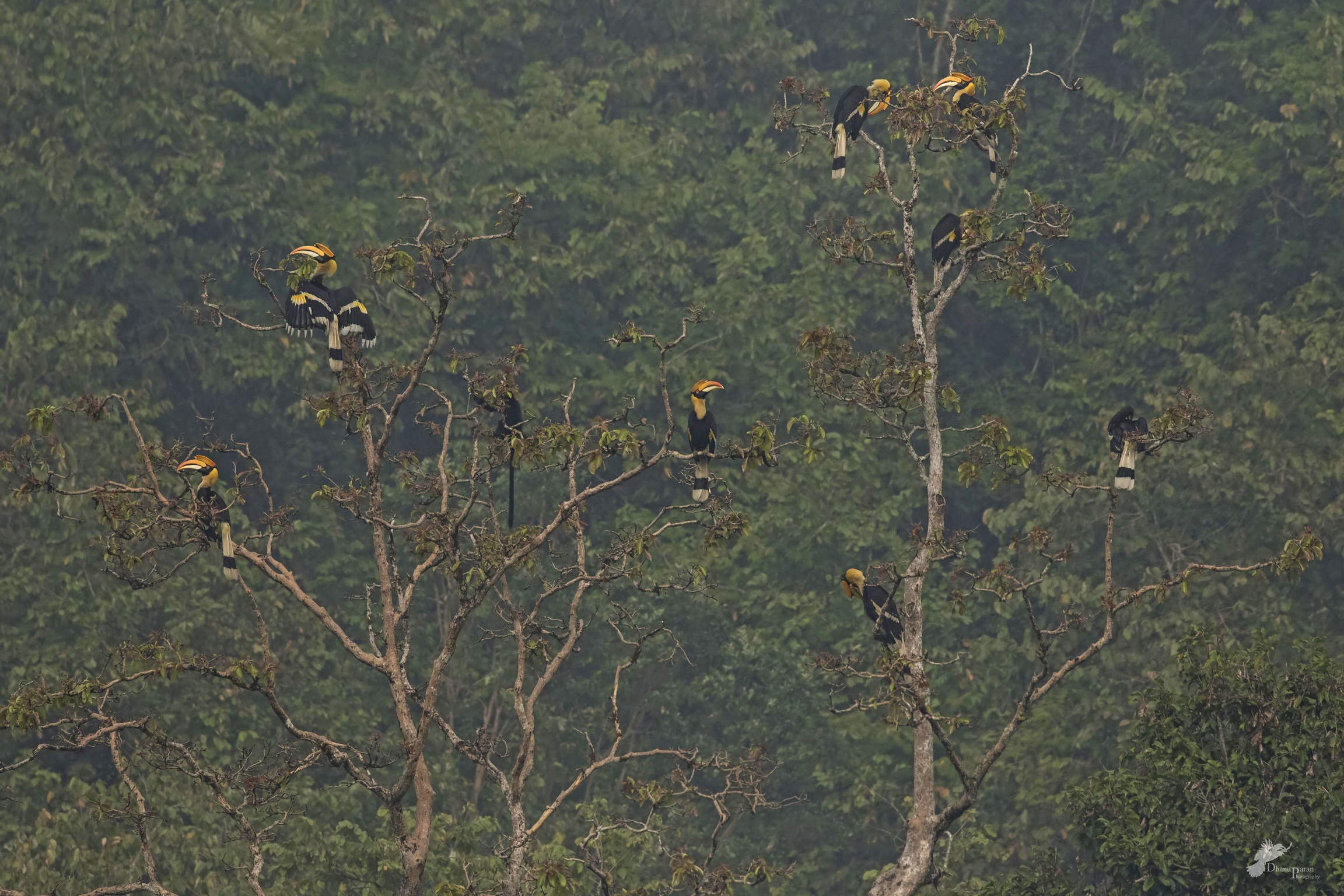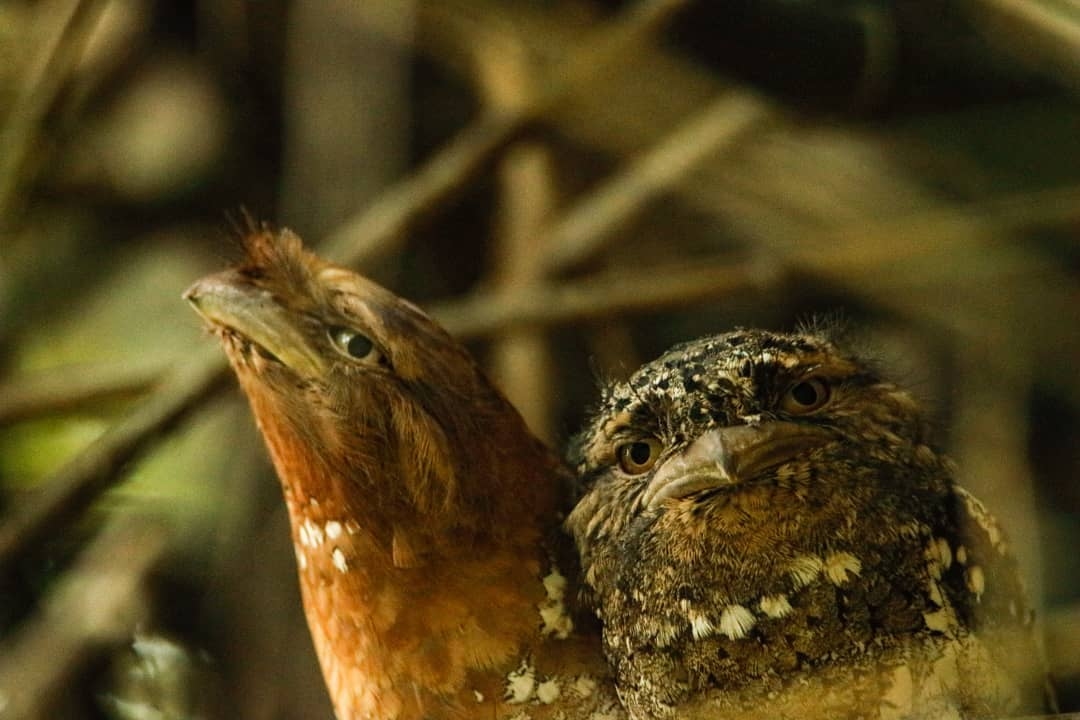If you make a wish list of carnivores to see in the Western Ghats and then arrange them on a spectrum of ‘likely to be seen’ to ‘most unlikely’ or ‘rarely seen’ – Nilgiri Marten would find its place in the latter extreme of this spectrum.
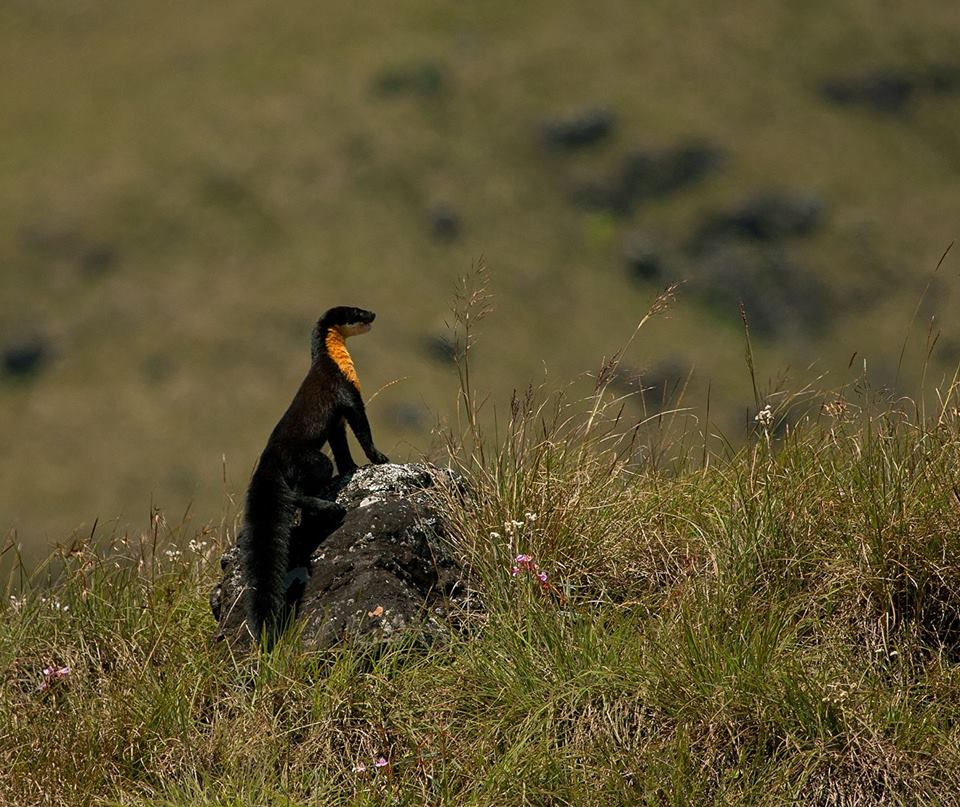
Rare, elusive and a fascinating carnivore, the sighting of a Nilgiri Marten has always been considered a jackpot for wildlife biologists, photographers, and enthusiasts alike. I was thrilled, beyond words, when I hit my jackpot during the field surveys in the Anamalai Tiger Reserve.
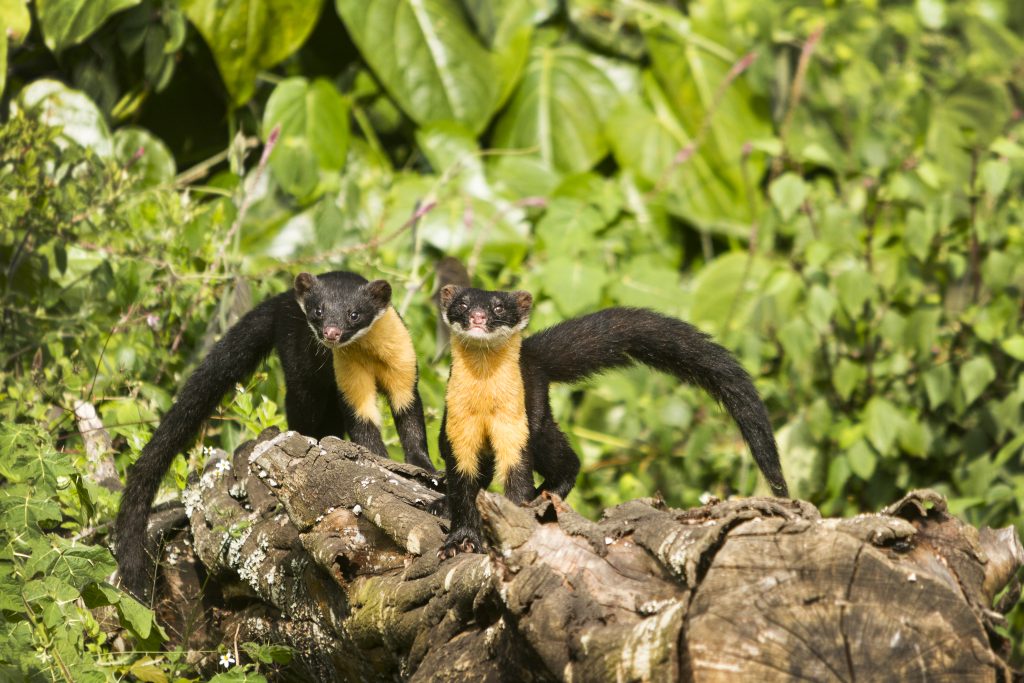
Seeing two Nilgiri Martens – one resting, stretching and yawing on a tall, crocodile bark tree (Terminalia elliptica) and the other running down the tree was nothing less than a dream for me. My friend from the Kadar tribe and I were lucky and fascinated to watch this rare carnivore of these forests for about twenty long minutes!
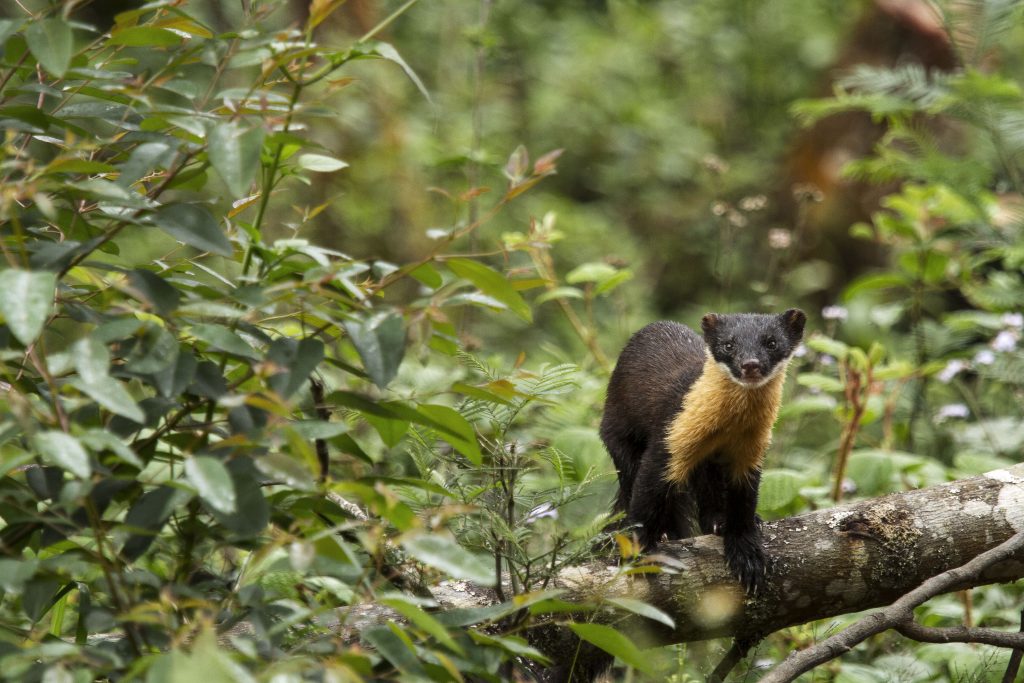
Nilgiri Martens have a distinctly bright yellowish-orange patch extending from throat to breast with a deep brown to black body coat and a long bushy tail. It is a medium-sized carnivore (weighing approx. 2kgs and 55-65 cm in length) with a characteristically pointed head, long neck, and a slender body.
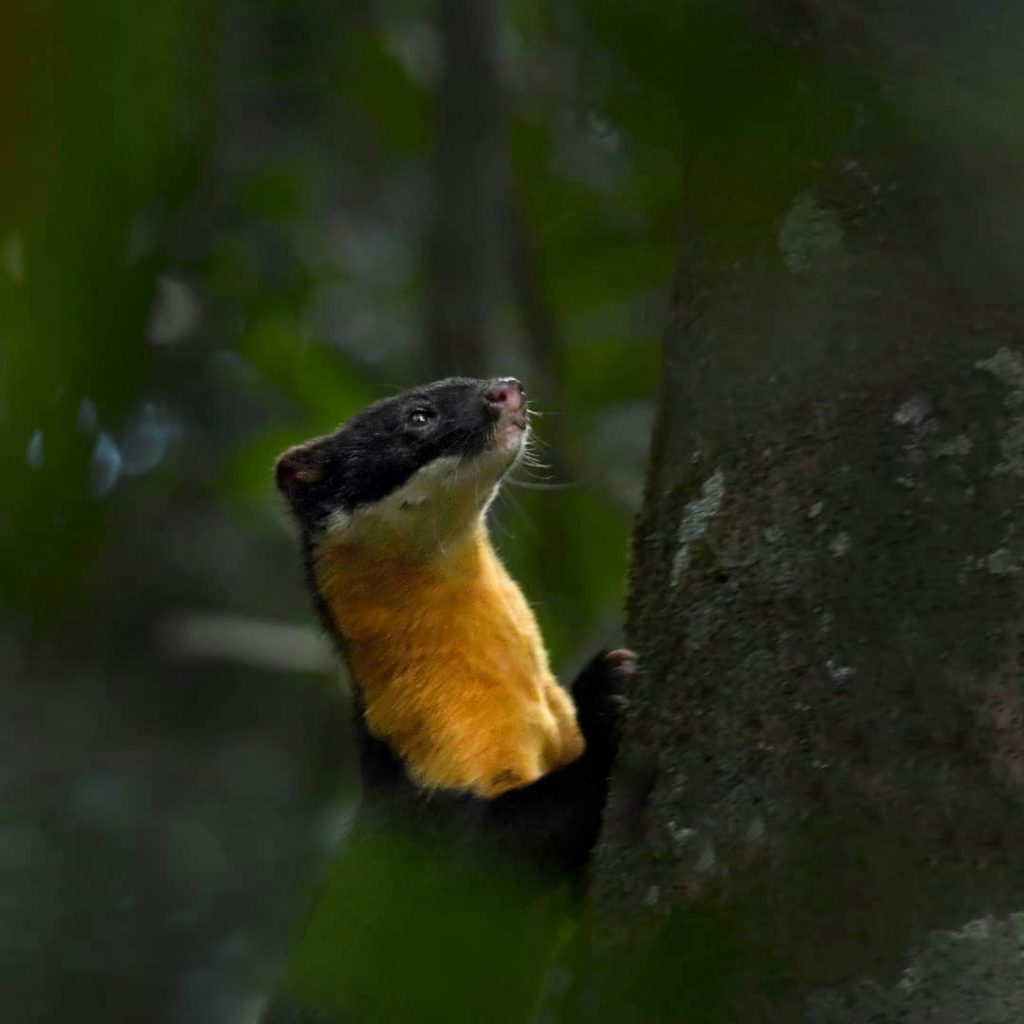
It is easy to mistake it for a Malabar Giant Squirrel when on top of the tree, due to similar colors but could be confirmed by its all-black tail. Nilgiri martens (Martes gwatkinsii) belong to the family Mustelidae which is the same as that of otters, badgers, and weasels.
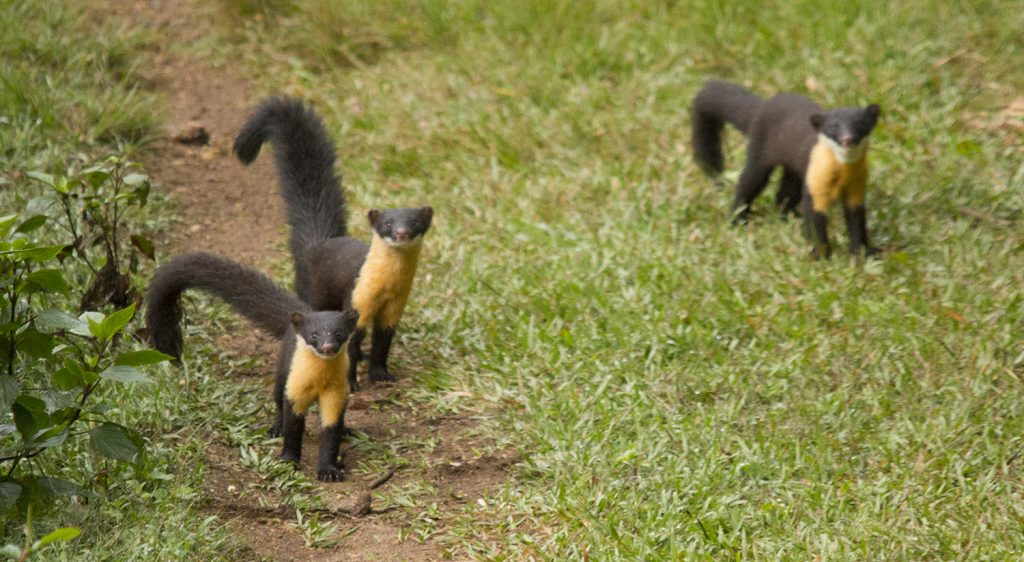
But unlike Otters (who are riverine carnivore), Nilgiri Martens spend most of their time on trees and maneuver amidst the thick canopy of the tropical forests of Southern India, hence locally known as Mara naai (meaning: tree-dwelling dog) in Tamil and Malayalam. They are diurnal in habit and mostly found solitary or in pairs. They are also known to form hunting parties up to four.
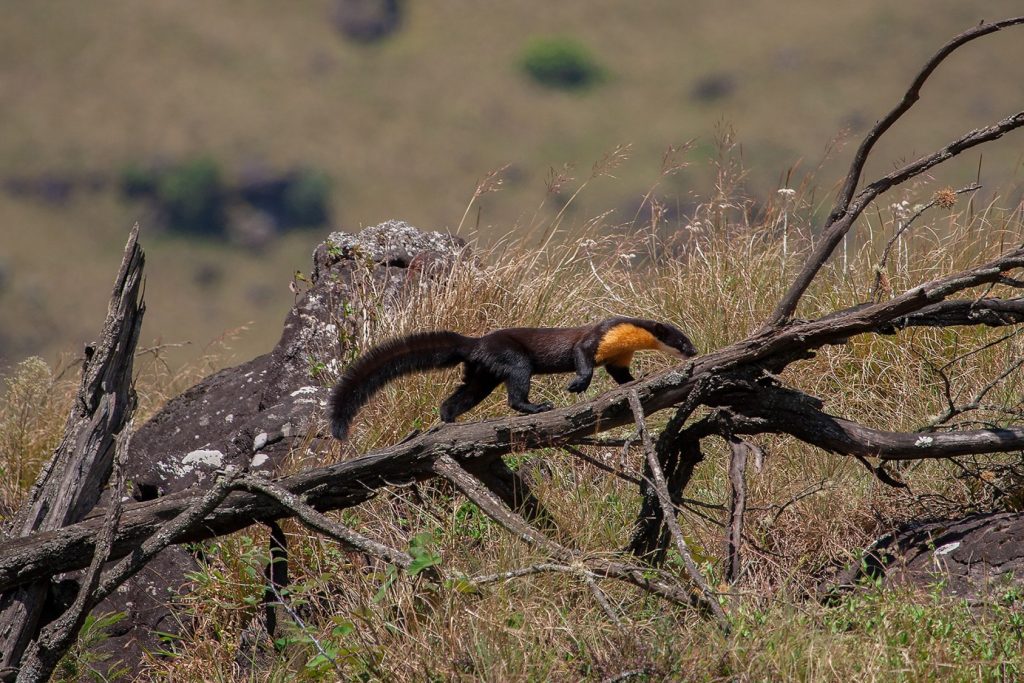
Nilgiri Marten is the largest and rarest of martens found in India and is endemic to the Western Ghats and the closest relative of Yellow-throated marten (Martes fluvigula) which has a wider distribution in the Himalayas. Nilgiri Marten’s known distribution in the Western Ghats is in three south Indian states viz. Karnataka, Tamil Nadu, and Kerala. In the Anamalai Hills, Nilgiri Martens occupy various forests types ranging from moist deciduous forests to montane grasslands called Shola grasslands above 2000 m. Recently, in the Anamalais, there have been few sightings of Nilgiri Marten even among the tea and coffee plantations.
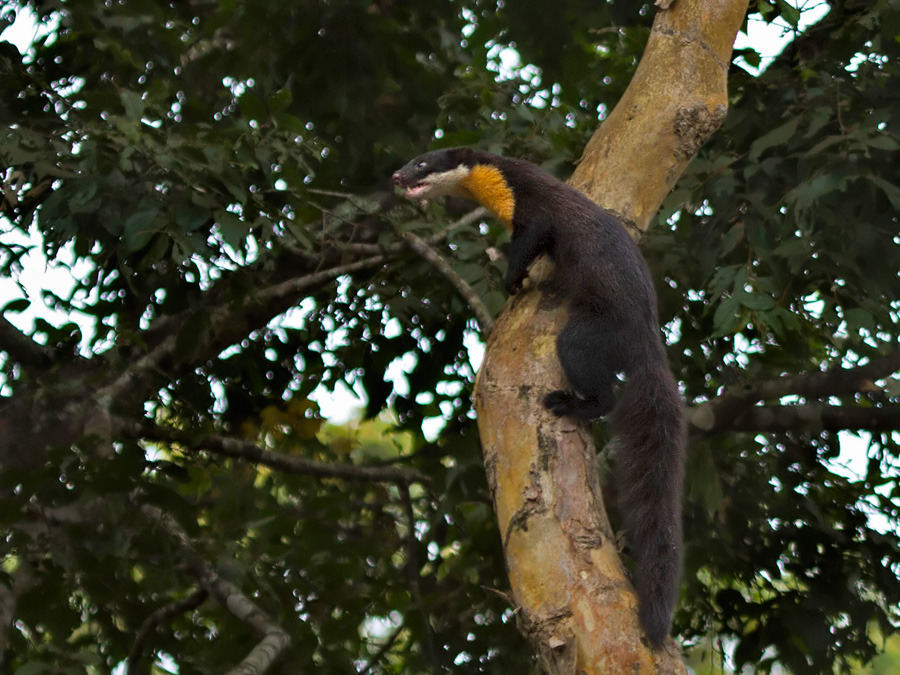
Being elusive among the small carnivores, Nilgiri Marten remains as one of the least studied species with very little information known about its reproduction, feeding ecology and behavior. Nilgiri Martens are believed to be good hunters and are believed to bring down even a mouse deer. They are known to hunt animals of various sizes such as hares, rats, squirrels, reptiles, birds and also feed on their eggs. They also feed on fruits, flowers, and buds. Opportunistically, they also raid bee-hives.
This elusive animal, though it remains understudied than other mustelids, is acknowledged to keep prey populations in control. Their presence in a particular forest is used as a barometer of forest health. They are also one of the indicators and iconic species of the tropical forests of southern India.
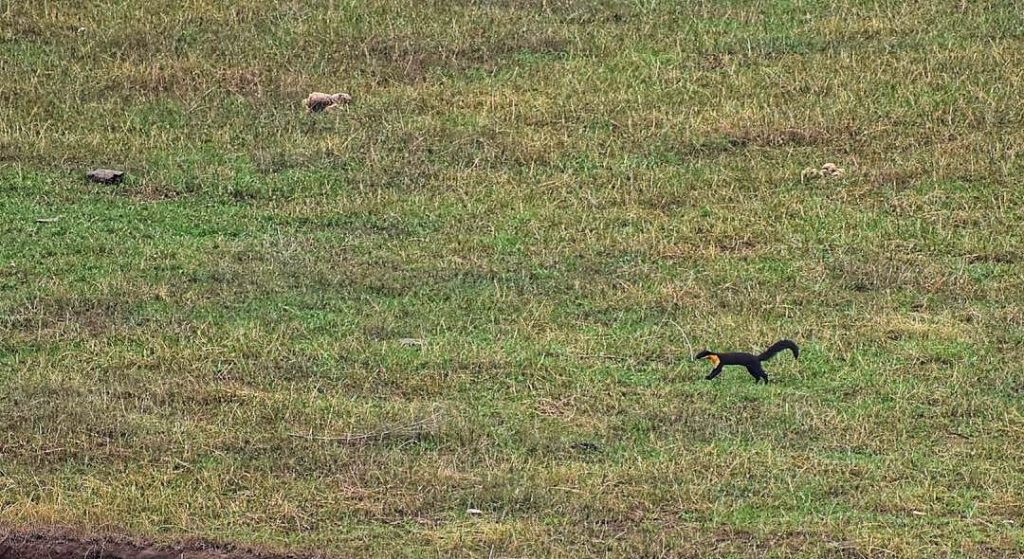
Due to the rarity of the species, its natural predators are unknown; similarly, direct hunting threats from humans are also low. Severe fragmentation of habitat remains the major threat for the fragmented distribution of Nilgiri Marten populations. The species has been listed as ‘vulnerable’ under IUCN conservation status. It also protected under schedule II of the Wild Life Protection Act (1972). Continued efforts to increase connectivity in the canopies of our forest would be the key to increase opportunities for many of us to cherish such a precious sighting and truly hit the jackpot in these diverse forests of the Anamalai Hills.
About the series – Icons of Anamalais:
A treasure house of biodiversity, the Anamalai’s region of the Western Ghats is home to a spectacular array of wild species, some rare and endemic, that are found nowhere else on Earth. “Elephants Hills” as it is literally translated, the region is one of the most picturesque landscapes in the country that hosts a broad variety of ecosystems ranging from tropical wet evergreen forests to sholas and montane grasslands to dry, scrub jungles.
Home to the large mammals like the Asiatic Wild Elephants, Indian Gaur, the endangered species like the Wild Dogs, Nilgiri Tahr, and Lion Tailed macaques, Anamalai’s is also first to be home to all 16 endemic bird species of Western Ghats.
This series of articles by The Pollachi Papyrus, celebrates the iconic birds and mammals of the Anamalai’s –a unique ecological tract and a global biodiversity hotspot that needs protection and conservation.

